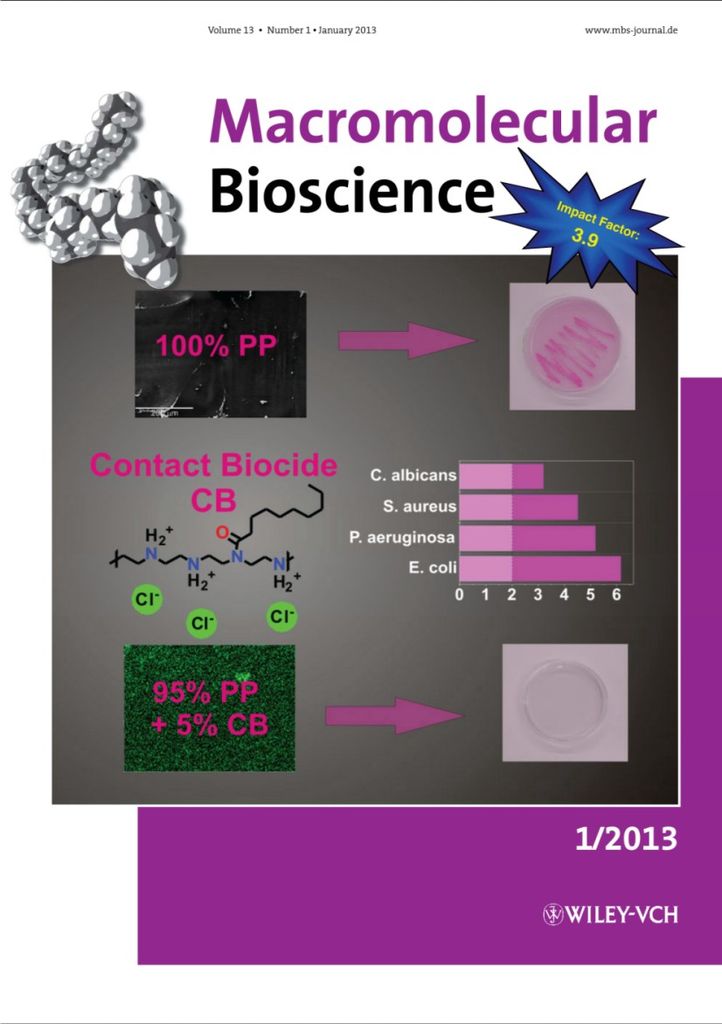joint research of the PCCL and the Graz University of Technology
 Researchers of the Polymer Competence Center Leoben GmbH, the Institute for Chemistry and Technology of Materials at the Graz University of Technology, the Varta Micro Innovation GmbH and KE KELIT GmbH have investigated contact biocides based on poly(2-ethyl-2-oxazoline) and poly(2-nonyl-2-oxazoline). The polymerizations and subsequent hydrolyses could be carried out in short reaction times of a few hours in microwave reactors. For the antimicrobial finishing of polypropylene, addition of 5 wt.-% (or less) of these polymers as an additive was found to be sufficient. The antimicrobial activity of the thus-produced plastic surfaces against E. coli, P. aeruginosa and C. albicans depended only on the number of cationic charges in the hydrolyzed copolymer. Against S. aureus, on the other hand, antimicrobial activity was provided only by copolymers with cationic charges and hydrophobic side chains. Maintenance of the antimicrobial activity of these polymers could be verified by repeated exposure to bacterial contamination.
Researchers of the Polymer Competence Center Leoben GmbH, the Institute for Chemistry and Technology of Materials at the Graz University of Technology, the Varta Micro Innovation GmbH and KE KELIT GmbH have investigated contact biocides based on poly(2-ethyl-2-oxazoline) and poly(2-nonyl-2-oxazoline). The polymerizations and subsequent hydrolyses could be carried out in short reaction times of a few hours in microwave reactors. For the antimicrobial finishing of polypropylene, addition of 5 wt.-% (or less) of these polymers as an additive was found to be sufficient. The antimicrobial activity of the thus-produced plastic surfaces against E. coli, P. aeruginosa and C. albicans depended only on the number of cationic charges in the hydrolyzed copolymer. Against S. aureus, on the other hand, antimicrobial activity was provided only by copolymers with cationic charges and hydrophobic side chains. Maintenance of the antimicrobial activity of these polymers could be verified by repeated exposure to bacterial contamination.
Publication: Andrew M. Kelly, Verena Kaltenhauser, Inge Mühlbacher, Karl Rametsteiner, Harald Kren, Christian Slugovc, Franz Stelzer and Frank Wiesbrock: Poly(2-oxazoline)-derived Contact Biocides: Contributions to the Understanding of Antimicrobial Activity. Macromol. Biosci. 2013, 13, 116-125. DOI: 10.1002/mabi.201200240
Contact:
Univ.-Doz. Dr. Frank Wiesbrock
This email address is being protected from spambots. You need JavaScript enabled to view it.















